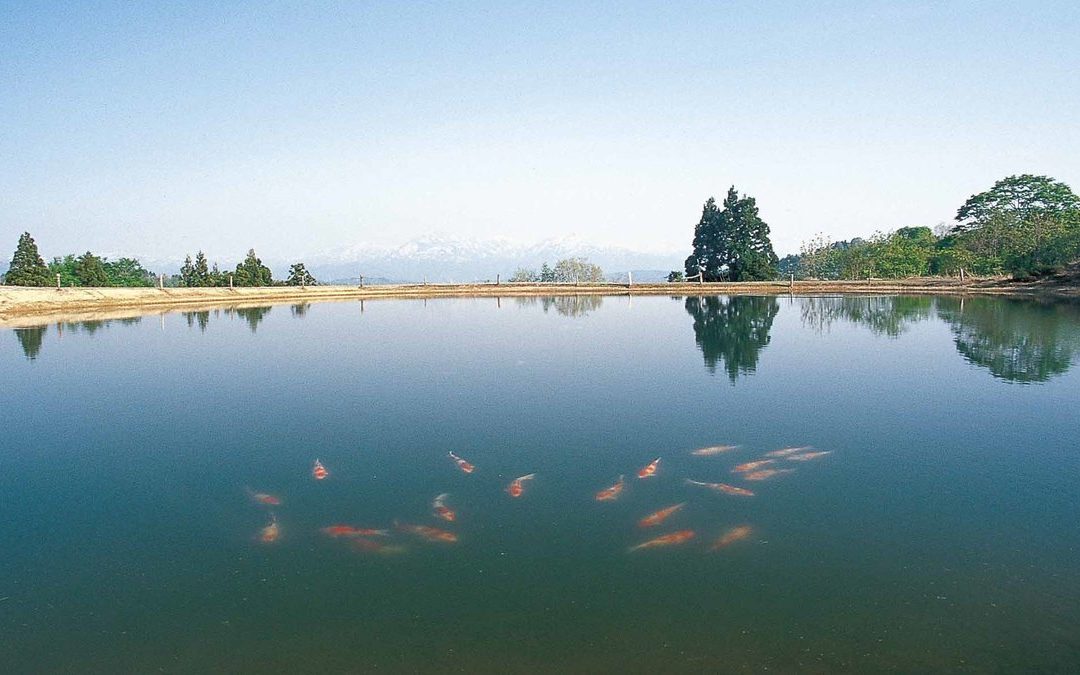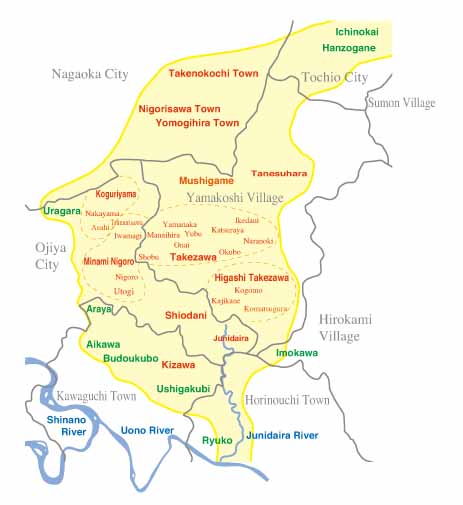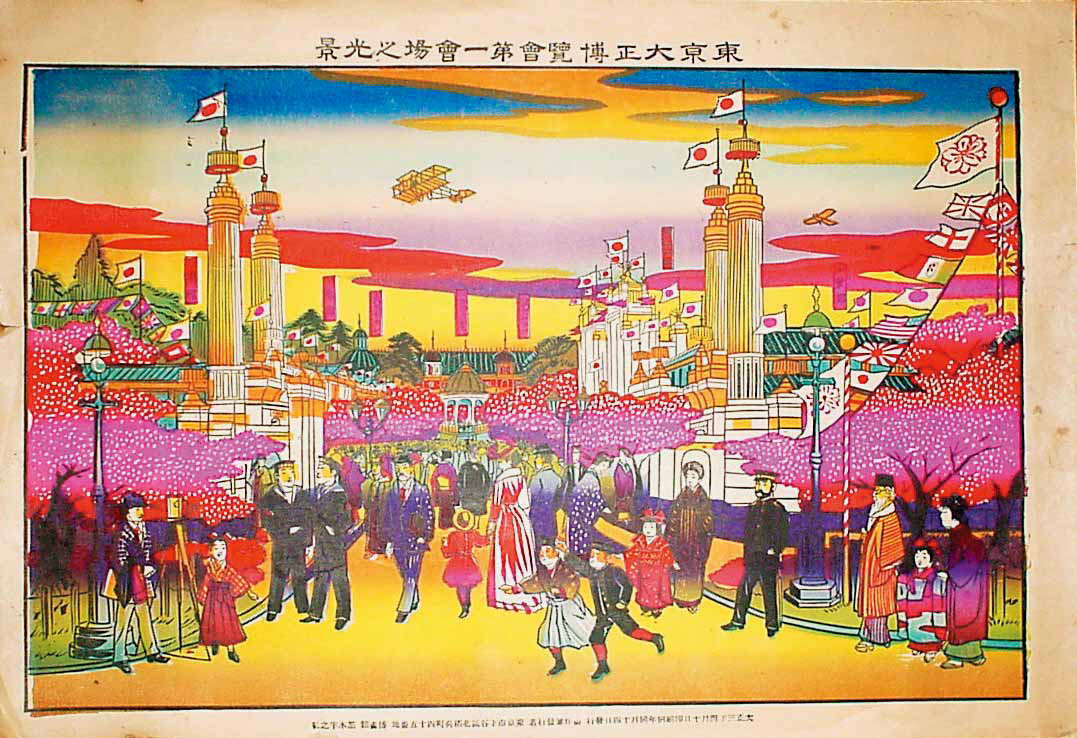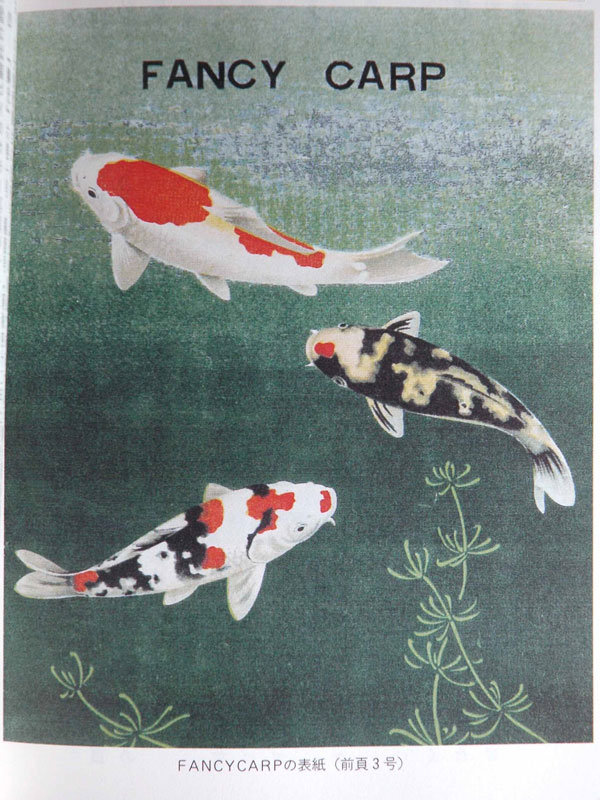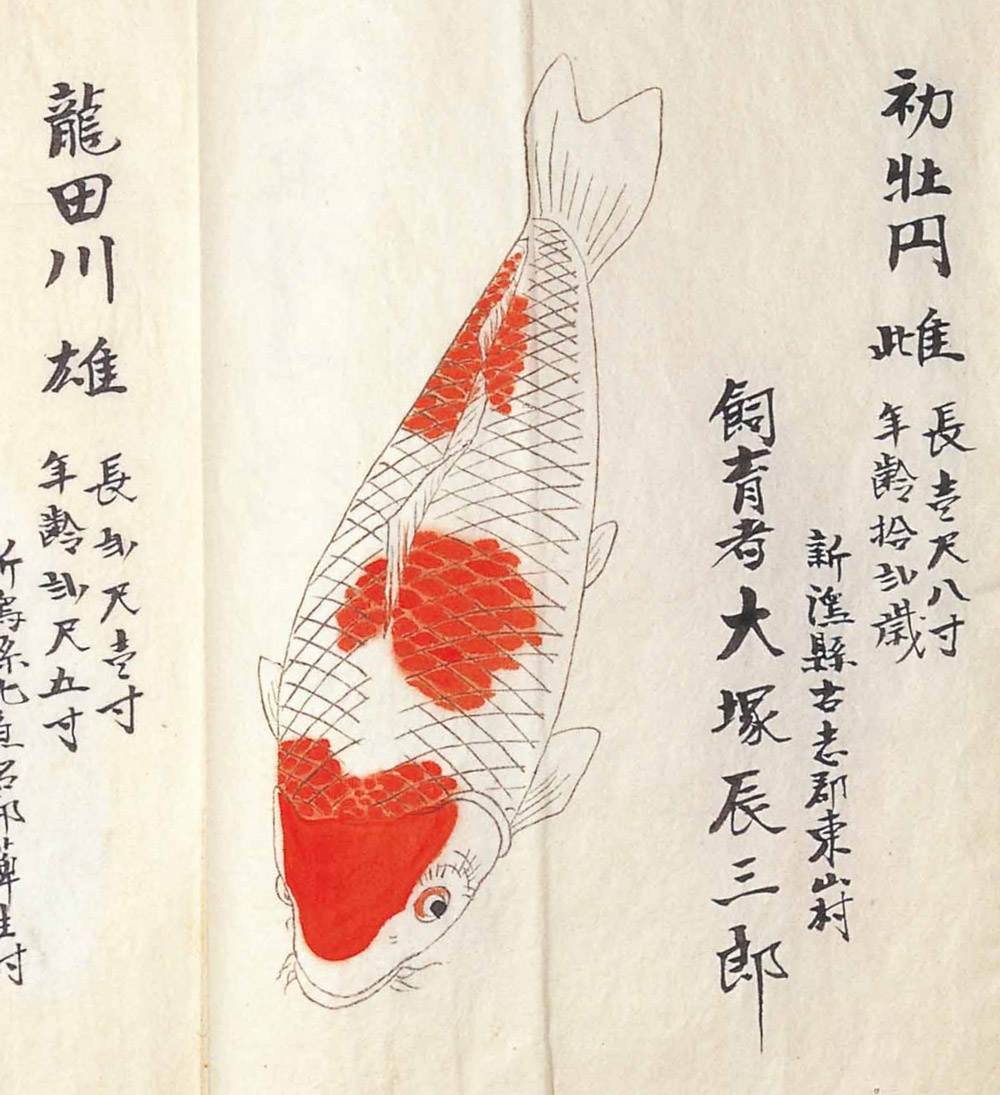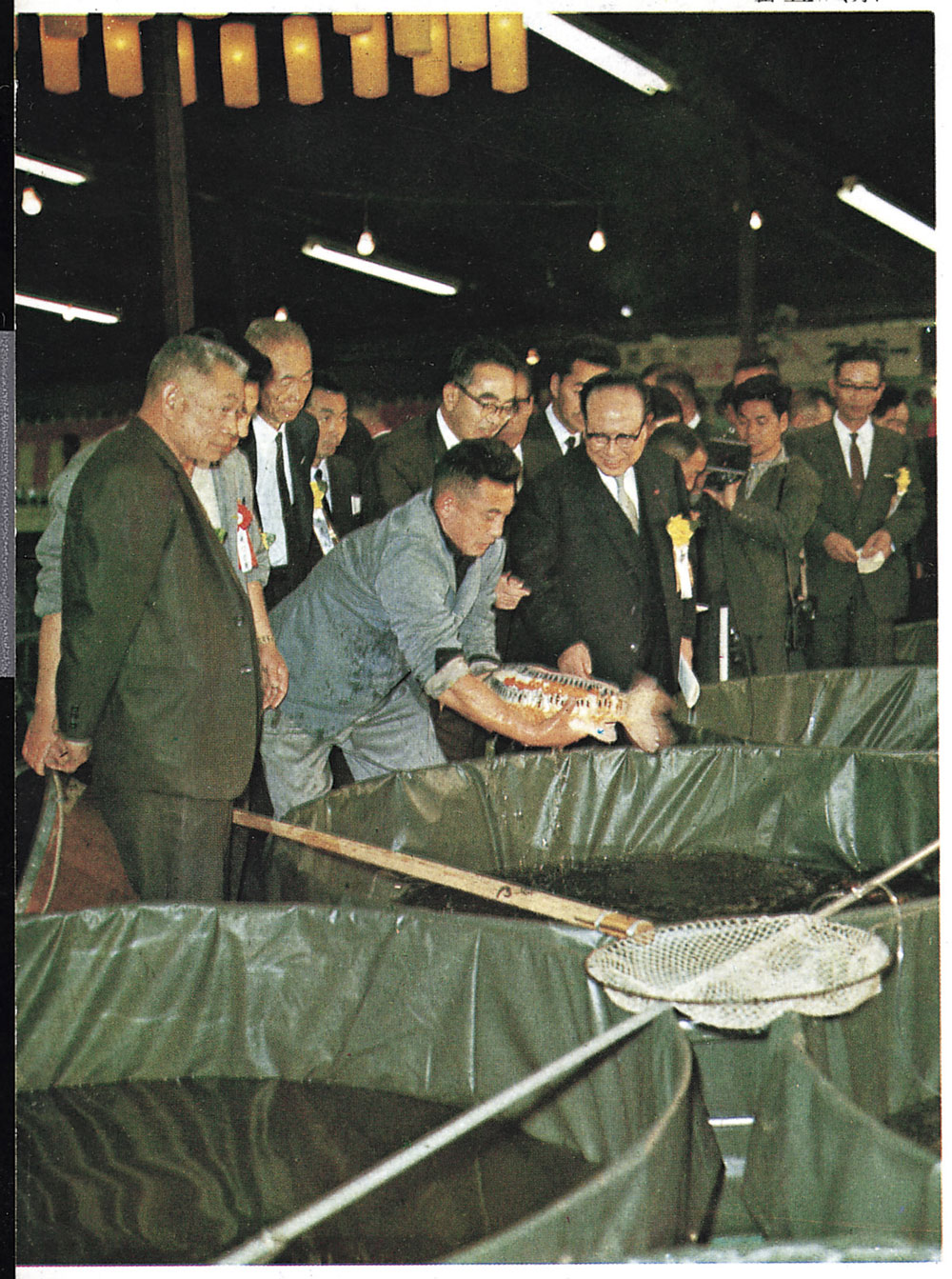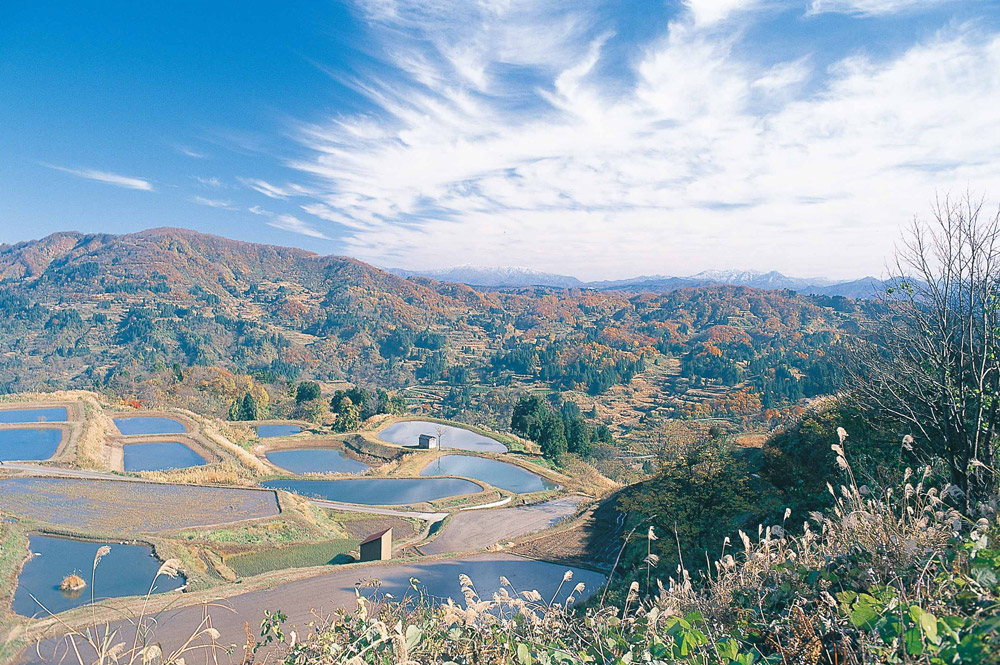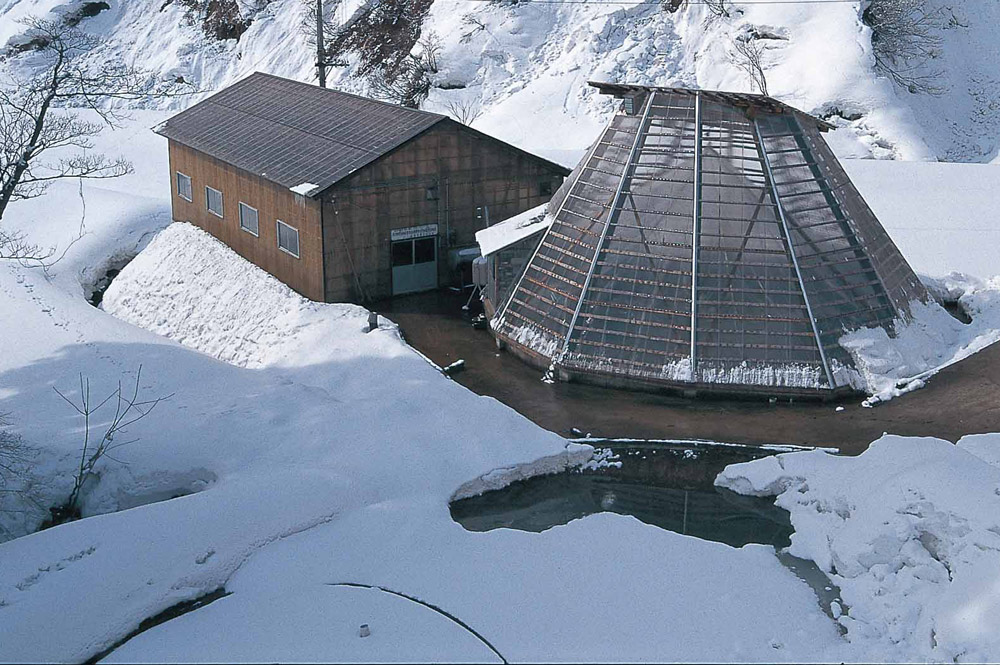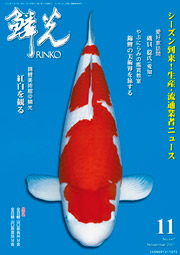Learn the history of Japanese Koi Fish (Nishikigoi) and how they grew into a household name.
Did you know that all “koi” were originally black carp and the name changed as they were bred further? Read through our story to better understand what is a koi and what is the history of how they came to be such a prized item in many cultures. Written by the Original Koi Magazine in Japan, we have compiled the real info directly from Koi mecca.
The History of Nishikigoi
It is recorded that some people in Nijusongo (part of present-day Ojiya and Nagaoka cities) found red koi (Higoi) and white koi (Shirogoi) among Magoi, and improved colored mutations into white koi with red markings on the gills during the Bunka and Bunsei periods (1804-1829). Those koi were called “Hoaka” (red cheeks). The improvement was followed by productions of “Menkaburi” “Hokaburi” and “Kuchibeni”.
They further produced white koi whose back had red spots and named them “Sarasa”. Sarasa is believed to be the forerunner of the Kohaku.
Half a century later in the Meiji Era, breeding Nishikigoi was banned because trades of some rare koi became too speculative. In the meantime, Sarasa was completely fixed as one of the varieties of Nishikigoi, and its name was changed to Kohaku.
Bekko, Utsurimono and some other varieties have been produced from the Higoi.
Showa Sanshoku is produced by mating Ki Utsuri with Matsukawabake.
Nishikigoi made its debut in earnest in 1914, when the Taisho Expo was held in Tokyo. In 1925, 108 Nishikigoi of 30cm in length were safely sent to the USA. Today, display of Nishikigoi in Japanese gardens, built at many industrial expositions overseas, is being encouraged in accordance with national policy.
Name Changes from Carp
“Nishikigoi” is a general term for carp with refined colors and patterns, kept for appreciation. There is a record that the Nagaoka clan sold the carp in various regions in early 19th century. When the Taisho Expo was held in 1914, the carp were on display tagged as “Kawarigoi” of Echigo.
Later its name was changed to “Irogoi” (colored carp), however, there is a Japanese homonym which means eroticism, so it was changed again to “Hanagoi” (flower carp) during World War ‡U.
The name was widespread by the distributors’ publicity. Nishikigoi is not a taxonomical name of ichthyology.
The Japanese name, Hanagoi, was first transcribed into the English name “flower carp”, and then it was changed to “fancy carp” as the export of Nishikigoi became popular. However, many foreign koi enthusiasts started to directly use the Japanese word “Nishikigoi”. Later the name was fixed simply as “koi”. Today people use the word carp for Japanese black koi (Magoi).
In 2014, Nishikigoi was chosen as the fish of Nagaoka City in order to commemorate the 10th anniversary of the reconstruction from the Niigata Prefecture Chuetsu Earthquake. In 2018, Nishikigoi was chosen as the ornamental fish of Niigata Prefecture.
The Nature of the Locality & Improvement of Nishikigoi
Breeding koi as an industry in Niigata started in the early 17th century. The skills for breeding koi have been inherited from generation to generation in the Nijusongo and neighboring villages. Koi had been so close to the villagers that there is an interesting story concerning them. Dating back to the late 18th century, this district was visited by a great drought, so people moved their koi into the ponds on the premises of Senryu Shrine in Shiodani and Juni Shrine in Komatsugura. Their efforts were later linked with producing some Kawarigoi.
Nijusongo, known as the birthplace of Nishikigoi, is located in the mountains along the Shinano River. Until as recently as half a century ago, the deserted area was hard to reach by public transportation.
They stocked their rice paddies with hatched fry. No mutations can escape their notice. Their careful observation and persistent spirit of inquiry have improved Nishikigoi to works of art.
Find About History of Nishikigoi
To learn the most about koi, subscribe and become a paid member of RINKO Online!

